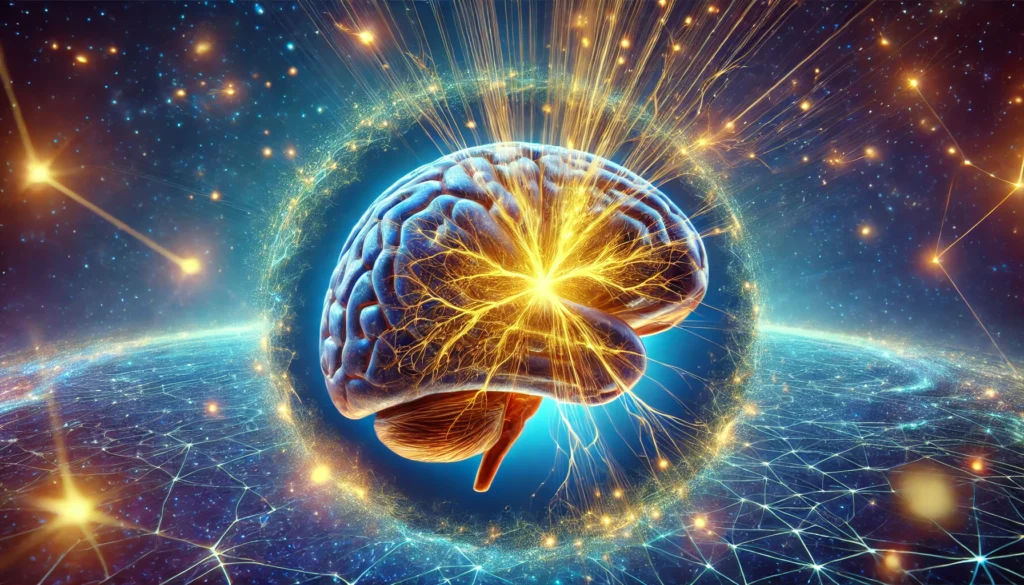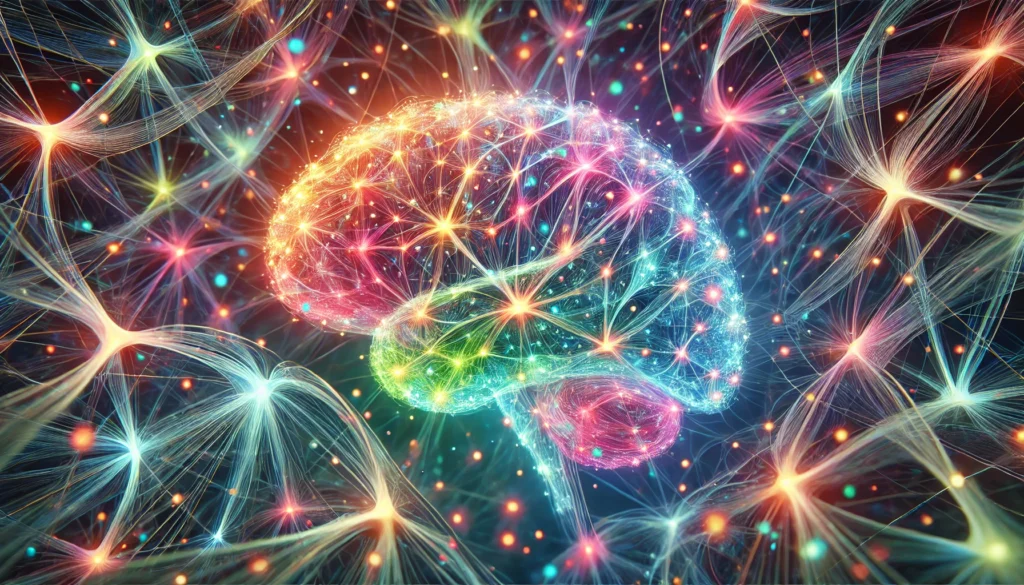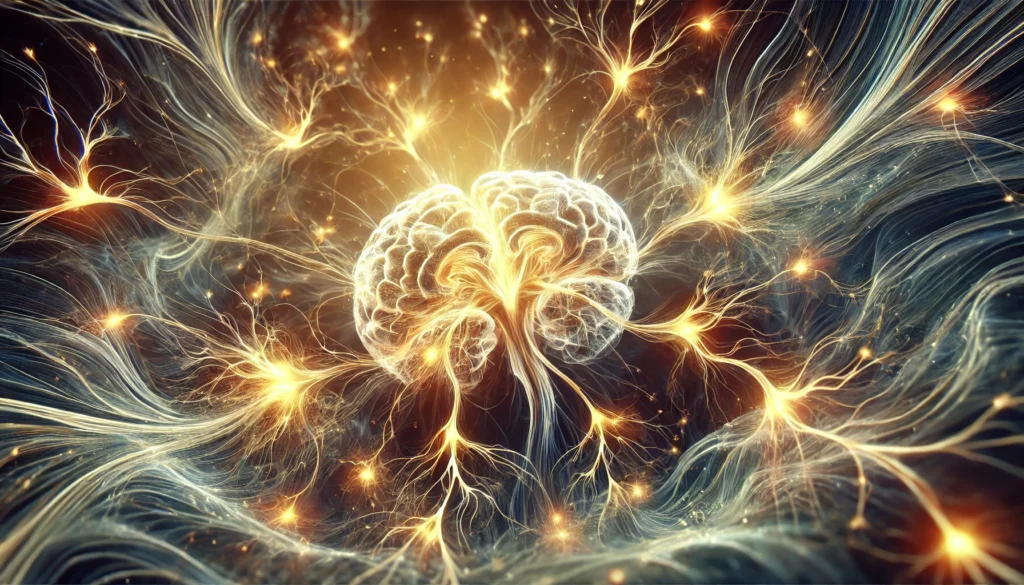Brain injuries represent some of the most complex and challenging medical conditions, often resulting in profound cognitive, behavioral, and neurological consequences. Among these injuries, understanding the distinction between primary vs secondary brain injury is essential in assessing their impact on neural pathways and guiding effective recovery strategies. The intricacies of these injuries highlight the importance of timely intervention, targeted rehabilitation, and a deep comprehension of how the brain’s delicate structures respond to trauma. As we explore the nuances of primary and secondary brain injury, we uncover how these conditions affect memory, recall, and overall cognitive resilience, illuminating pathways for optimized neural recovery.
You may also like: How to Retrain Your Brain: Harnessing Neuroplasticity to Overcome Anxiety and Strengthen Neural Pathways
The Nature of Primary Brain Injury
A primary brain injury, also known as a primary head injury, occurs at the moment of trauma and is directly caused by the external force exerted on the brain. This type of injury can result from blunt force trauma, penetrating wounds, or rapid acceleration and deceleration movements that jolt the brain against the skull. The severity of a primary brain injury varies widely, ranging from mild concussions to severe open cerebral trauma, where the skull and brain tissue are directly compromised.
One of the defining characteristics of a primary brain injury is its immediate and irreversible nature. Damage occurs at the point of impact, leading to cellular disruption, hemorrhaging, and potential skull fractures. In cases of open head wound injuries, there is an increased risk of infection due to exposure of brain tissue. Conversely, a closed head injury definition encompasses injuries where the skull remains intact, but the brain sustains internal trauma from forceful movement within the cranial cavity. These differences play a crucial role in determining the extent of neural damage and the potential for recovery.
The classification of traumatic brain injuries is essential in understanding the diverse manifestations of primary brain injury. Traumatic brain injury classification typically includes focal injuries, such as contusions or hematomas, and diffuse injuries, such as diffuse axonal injury (DAI). These distinctions are critical in shaping treatment protocols and determining rehabilitation approaches tailored to the specific needs of each patient. Given the immediate consequences of a primary brain injury, medical professionals must act swiftly to stabilize patients, minimize further damage, and lay the groundwork for long-term recovery.

The Delayed Onset of Secondary Brain Injury
While a primary brain injury occurs instantaneously, a secondary brain injury unfolds over hours, days, or even weeks following the initial trauma. Secondary brain injury encompasses a cascade of biochemical, metabolic, and cellular changes that exacerbate the damage inflicted by the primary insult. This progressive deterioration often results from inflammatory responses, oxidative stress, and disruptions in cerebral blood flow, all of which contribute to the worsening of neural function.
Secondary brain damage from head injury is particularly concerning because it amplifies the initial trauma’s impact, leading to additional neuronal loss and cognitive impairment. This form of injury can be triggered by hypoxia, swelling, and excitotoxicity, where excessive neurotransmitter release causes further neuronal damage. Secondary TBI injury mechanisms are complex and multifaceted, often requiring intensive medical intervention to mitigate their effects and preserve neural function.
Research has highlighted the profound role of neuroinflammation in secondary TBI. Following an initial injury, the brain’s immune response becomes hyperactive, releasing cytokines and other inflammatory mediators that contribute to tissue damage. While this response is a natural part of the body’s healing process, its excessive activation in secondary traumatic brain injury can lead to widespread neural degradation. This underscores the importance of timely therapeutic strategies aimed at modulating inflammation and preventing the long-term consequences of secondary head injury.
The Differences Between Open and Closed Brain Injuries
A fundamental distinction in brain injury classification lies in the differentiation between open head injury vs closed head injury. Open brain injuries occur when an external object penetrates the skull, directly exposing brain tissue to potential contaminants. Such injuries often result from high-impact trauma, such as gunshot wounds or severe vehicular accidents, leading to localized damage and a high risk of infection.
On the other hand, closed head trauma definition refers to injuries where the skull remains intact, but the brain experiences significant force, causing internal damage. These injuries are commonly seen in falls, sports-related incidents, and motor vehicle collisions. The closed injury definition encompasses conditions such as concussions, contusions, and diffuse axonal injuries, all of which can significantly impact cognitive function and memory.
Both types of injuries pose unique challenges in treatment and recovery. While open brain injury advantages may include the ability to directly access and remove damaged tissue through surgical intervention, the risks associated with infection and long-term deficits remain substantial. Conversely, closed head injuries often require more nuanced management strategies, as the damage is not always immediately visible through standard imaging techniques. Understanding the implications of open vs closed brain injury is crucial in tailoring effective rehabilitation programs and optimizing neural recovery.
The Impact of Brain Injuries on Neural Pathways and Cognitive Function
The consequences of primary and secondary brain injury extend far beyond the immediate physical trauma, affecting neural pathways responsible for memory, recall, and cognitive processing. Damage to these pathways can manifest in various forms, including memory deficits, impaired executive function, and difficulties in information retrieval. The degree of impairment often correlates with the severity and location of the injury, highlighting the importance of targeted therapeutic interventions.
Neural pathway strengthening plays a vital role in mitigating the effects of traumatic brain injury secondary injury. Emerging research in neuroplasticity suggests that the brain possesses an inherent ability to reorganize and form new neural connections following injury. This adaptive capability serves as the foundation for rehabilitation strategies aimed at restoring lost function and enhancing cognitive resilience. Techniques such as cognitive therapy, neurofeedback, and transcranial magnetic stimulation (TMS) have shown promise in facilitating neural recovery and optimizing memory retention.
Additionally, lifestyle factors such as nutrition, physical exercise, and cognitive training can significantly influence the brain’s ability to recover from secondary TBI. A diet rich in omega-3 fatty acids, antioxidants, and essential nutrients has been linked to improved cognitive function and reduced inflammation, offering a natural means of supporting neural healing. Likewise, engaging in mentally stimulating activities, such as learning new skills or practicing mindfulness, can help reinforce neural pathways and promote long-term cognitive health.

Frequently Asked Questions (FAQ) on Primary vs. Secondary Brain Injury
1. What are the key differences between an open head injury vs closed head injury, and how do they impact long-term recovery? An open head injury vs closed injury distinction lies in whether the skull is breached. Open head wounds expose the brain to external elements, increasing infection risks but allowing surgeons direct access to damaged tissue. In contrast, a closed head injury definition involves internal trauma where the skull remains intact, often leading to widespread damage due to swelling and intracranial pressure. Long-term recovery from an open cerebral trauma can be more predictable due to visible damage, whereas closed head injuries may involve hidden complications, such as diffuse axonal injuries. Cognitive rehabilitation strategies differ significantly between these injuries, requiring tailored therapy plans to optimize neural recovery.
2. How does secondary brain injury progress, and why is early intervention crucial? Secondary brain injury develops after the initial trauma, often triggered by inflammation, hypoxia, and metabolic dysfunction. Unlike a primary injury, which occurs immediately, a secondary tbi evolves over time, exacerbating neural damage. Without prompt medical attention, secondary brain damage from head injury can cause irreversible cognitive deficits and neurological decline. Advanced monitoring techniques, such as intracranial pressure measurement and neuroimaging, help detect secondary TBI early, allowing physicians to implement therapeutic interventions. Effective management strategies focus on reducing inflammation, restoring oxygen levels, and preventing excitotoxicity to mitigate further deterioration.
3. What is a closed head injury, and why is it more challenging to diagnose than an open brain injury? What is a closed head injury? It is a form of trauma where the skull remains intact while the brain sustains internal damage due to sudden force or impact. A closed injury definition encompasses conditions like concussions, contusions, and diffuse axonal injuries, which may not always present immediate symptoms. Unlike open brain injuries, where visible wounds help identify damage, closed head trauma definition complications often manifest gradually, making diagnosis more difficult. Physicians rely on MRI and CT scans, alongside cognitive assessments, to detect underlying neural disruptions and tailor treatment plans.
4. How do primary and secondary brain injury affect cognitive function differently? Primary and secondary brain injury impact cognition in unique ways due to their distinct mechanisms of damage. A primary brain injury results in immediate neuronal loss, often leading to motor impairments, memory lapses, and executive function difficulties. Secondary traumatic brain injury compounds this damage by triggering neuroinflammation and oxidative stress, worsening cognitive deficits over time. Patients experiencing primary vs secondary brain injury symptoms may initially recover well but later face progressive cognitive decline if secondary TBI is not properly managed. Rehabilitation efforts, including cognitive therapy and neural stimulation, aim to restore function and slow neurodegeneration.
5. What are the advantages of an open brain injury in medical treatment compared to a closed brain injury? Open brain injury advantages primarily lie in surgical accessibility and precise treatment options. Surgeons can directly address hematomas, remove necrotic tissue, and alleviate pressure in an open head wound scenario. Conversely, closed head injuries often require non-invasive techniques like medications or induced comas to control swelling. The open vs closed brain injury debate in medical treatment often centers on infection risks versus the challenges of detecting diffuse damage. While open brain injuries may provide clearer intervention paths, closed head injuries demand long-term monitoring to prevent secondary complications.
6. How does secondary brain injury influence mental health, and what psychological support is necessary? Secondary TBI injury can have profound psychological repercussions, including depression, anxiety, and post-traumatic stress disorder (PTSD). The delayed progression of secondary head injury often leaves patients and caregivers unprepared for evolving cognitive and emotional changes. Therapy options like cognitive behavioral therapy (CBT), mindfulness training, and structured support groups help individuals cope with the mental health challenges associated with traumatic brain injury secondary injury. Addressing these psychological aspects is essential for holistic recovery, as unmanaged stress and emotional strain can exacerbate neurological symptoms. A multidisciplinary approach that combines psychological support with medical treatment ensures better patient outcomes.
7. What role does diet and lifestyle play in mitigating secondary brain injury effects? A nutrient-rich diet and an active lifestyle significantly influence recovery from secondary traumatic brain injury. Anti-inflammatory foods, such as leafy greens, fatty fish, and antioxidant-rich berries, help reduce neuroinflammation and support cognitive repair. Physical exercise stimulates neurogenesis, promoting neural pathway strengthening and mitigating secondary brain damage from head injury. Mindfulness practices, such as meditation and controlled breathing, also play a crucial role in managing stress-related neural deterioration. Adopting a brain-focused lifestyle enhances resilience against secondary brain injury progression and optimizes long-term neural health.
8. How do closed head injuries impact memory and recall differently than open brain injuries? Memory impairment varies significantly between closed and open brain injuries due to the nature of the trauma. In a closed head trauma definition, diffuse axonal damage disrupts communication between brain regions, leading to fragmented recall and difficulty in information retrieval. In contrast, open cerebral trauma often results in focal damage, affecting specific memory centers but sparing others. Patients with closed injuries may struggle with both short-term and long-term memory formation, whereas those with open injuries might retain past memories but struggle with new learning. Cognitive rehabilitation, including spaced repetition and neurofeedback, aids in restoring memory function following traumatic injury.
9. What technological advancements are improving treatment for primary and secondary brain injuries? Advancements in neurotechnology are revolutionizing the treatment of primary and secondary TBI injury. Emerging techniques like transcranial magnetic stimulation (TMS) and deep brain stimulation (DBS) offer new avenues for enhancing cognitive recovery. AI-driven diagnostics allow for early detection of secondary traumatic brain injury, enabling preemptive interventions to minimize damage. Wearable neurofeedback devices help patients retrain their brains, improving cognitive function and reducing the effects of primary vs secondary brain injury. These innovations continue to expand the possibilities for recovery, providing patients with cutting-edge solutions tailored to their specific injuries.
10. What are the long-term risks of untreated secondary brain injury, and how can they be managed? Untreated secondary brain injury poses significant long-term risks, including chronic neurodegeneration, increased dementia susceptibility, and persistent cognitive decline. The progression of secondary brain damage from head injury can lead to motor deficits, speech impairments, and emotional instability. Preventative measures, such as regular cognitive assessments and personalized rehabilitation plans, help mitigate these risks. Pharmacological interventions targeting neuroinflammation and synaptic repair also offer promising strategies for long-term management. By addressing secondary TBI early, individuals can reduce the likelihood of permanent neurological impairment and enhance their quality of life.

Conclusion: Pathways to Recovery and Future Directions
Understanding the differences between primary vs secondary brain injury is essential in addressing the challenges associated with traumatic brain injuries. While primary injuries occur instantaneously, secondary injuries unfold over time, exacerbating neural damage and complicating recovery efforts. The classification of these injuries, whether as open or closed, further influences treatment approaches and rehabilitation outcomes.
Advancements in neuroscience and medical technology continue to pave the way for innovative therapeutic interventions aimed at mitigating the effects of primary and secondary brain injury. From pharmacological treatments targeting neuroinflammation to cutting-edge neurorehabilitation techniques, the future holds promising avenues for enhancing neural recovery and cognitive resilience. By integrating multidisciplinary approaches and prioritizing early intervention, individuals affected by traumatic brain injury can maximize their potential for recovery and regain cognitive function.
As research continues to evolve, a deeper understanding of neural pathway strengthening and memory restoration will shape the future of brain injury management. By recognizing the complexities of brain trauma and embracing comprehensive rehabilitation strategies, we can empower individuals on their journey toward cognitive recovery and improved quality of life.
Further Reading:
Understanding the role of pathways in a deep neural network
Important Note: The information contained in this article is for general informational purposes only, and should not be construed as health or medical advice, nor is it intended to diagnose, prevent, treat, or cure any disease or health condition. Before embarking on any diet, fitness regimen, or program of nutritional supplementation, it is advisable to consult your healthcare professional in order to determine its safety and probable efficacy in terms of your individual state of health.
Regarding Nutritional Supplements Or Other Non-Prescription Health Products: If any nutritional supplements or other non-prescription health products are mentioned in the foregoing article, any claims or statements made about them have not been evaluated by the U.S. Food and Drug Administration, and such nutritional supplements or other health products are not intended to diagnose, treat, cure, or prevent any disease.


